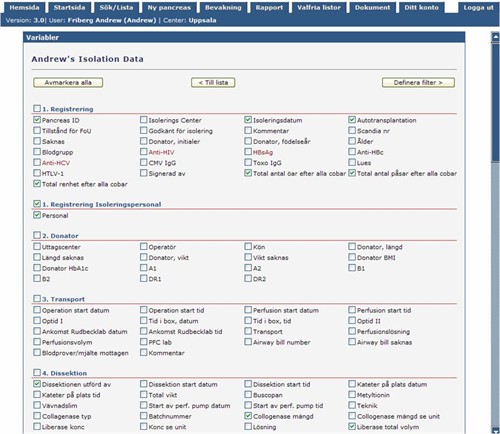NICS Database
What is nics?
The Nordic Islet Computer System (NICS) is the Web-based database system for entering and handling all information regarding islet isolation parameters, patient waiting lists, clinical studies information and important documents critical for a well-functioning, clinical lab.
MedSciNet provides NICS as well as numerous other databases to labs throughout the world. To see an example, enter test data and experience a database used for islet isolation contact: magnus.stahle@akademiska.se
Regulatory authority approval
"MedSciNet's solutions conform to relevant FDA, NIH, and HL7 standards, guidelines and recommendations." -MedSciNet
The Swedish Board for Accreditation and Conformity
Assessment (SWEDAC) has approved the NICS database as meeting
requirements for patient information security and use in handling
clinical data.
Traceability
Traceability is a hallmark for regulatory approval. When an isolation begins a new data tree opens. Once a page in that tree is signed and locked, all changes to that page are recorded as well as who performed the changes. Scanned documents such as those with batch numbers of materials and solutions used for an isolation, who prepared them and when are uploaded to respective preparations. Images of isolated islets are also uploaded to provide a permanant record of islet appearance in line with current good manufacturing practices (cGMP).
Accessability
Access to information is limited depending on the need to access donor information, islet isolation data, recipient patient data or as collaborators receiving research material. No person has access to information for instance linking donor indentity to patient identity without proper authorization.

Database function
Not only is NICS used for entering information but functions as a powerful research tool thanks to the database function. The user can choose parameters to compare (e.g. donor ID, body mass index, cold ischemia time and outcome of isolation), set limits and exclude unwanted information (e.g. autotransplanted preparations when analyzing allo-data). This is undoubtedly the best function for researchers and those wanting an overview of the isolation program. Customized lists and graphs, such as average islets isolated for the last 10, 100, or 1000 organs, day of the week organs arrive or total isolations per year or month, are easily accessable and can provide valuable information. Efficiency improves and up to the minute data is available for decision making.